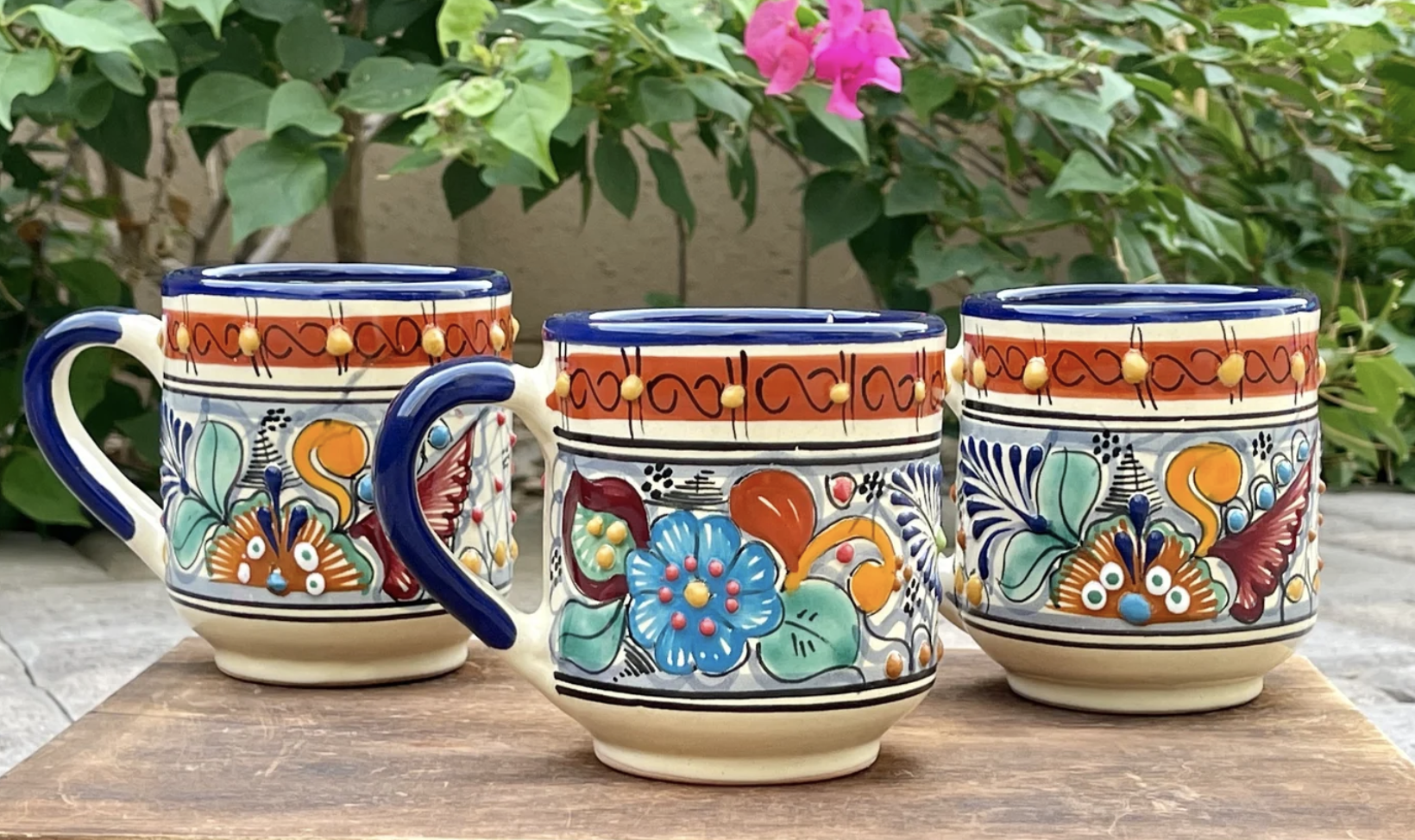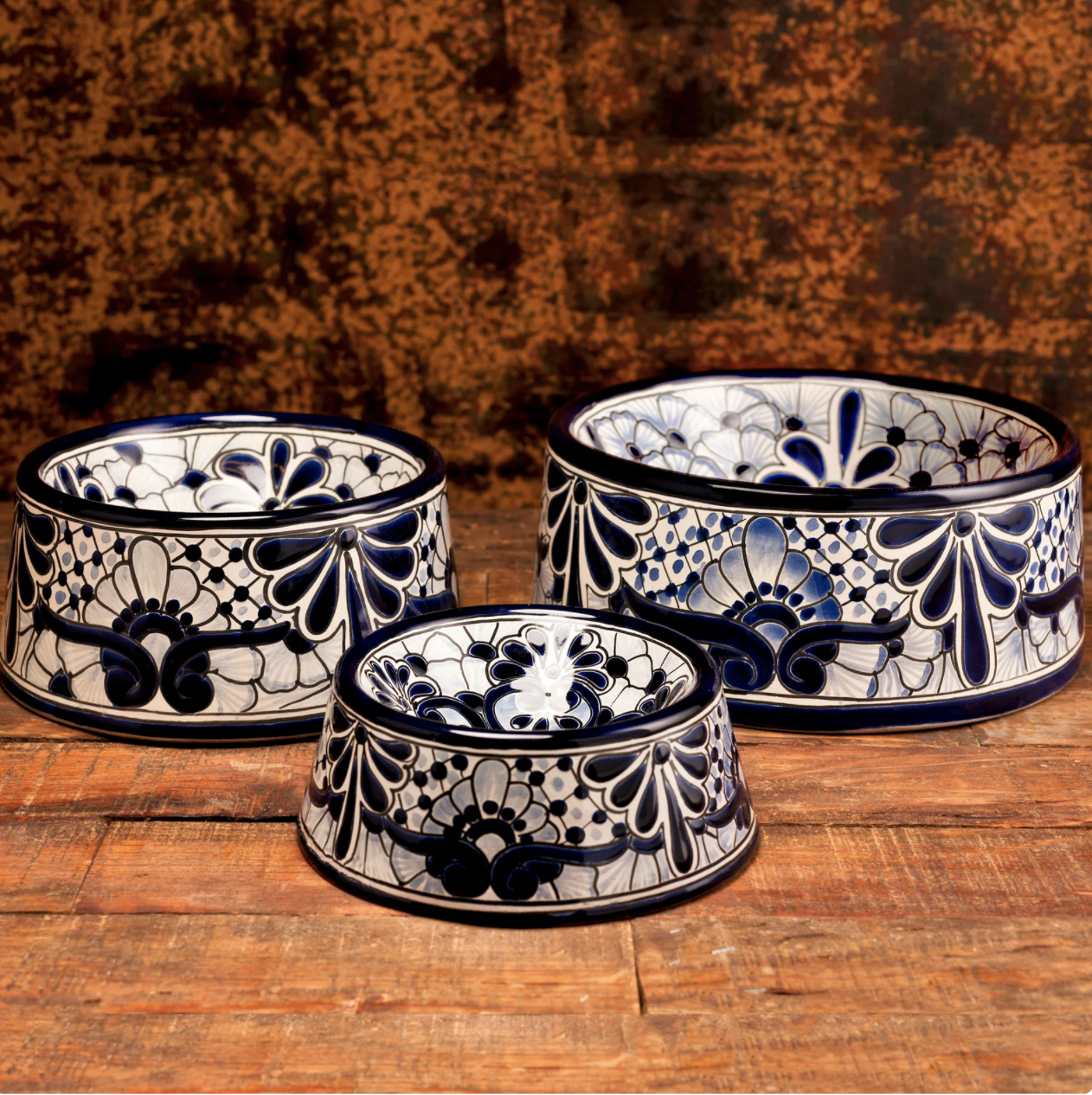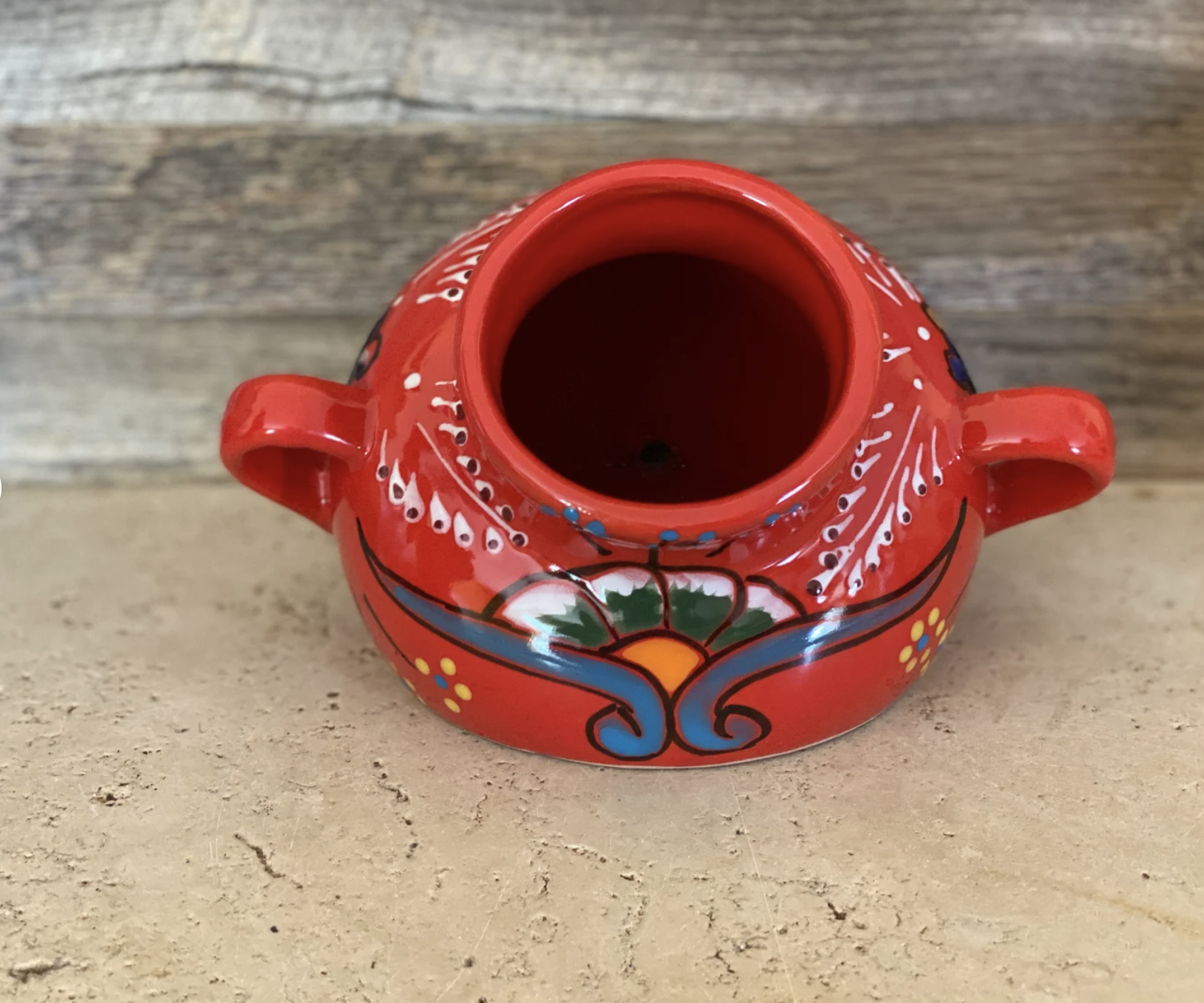All Things Home Pottery: The Beauty of Talavera Poblana
Have you ever traveled to a different country or seen something beautiful on Etsy or in a store and wondered about it? How was it made? Can I use it at home, what type of craft is that? We have a wonderful guest post today by Elizabeth Shields, a small business owner who loves to travel and discover handmades and healthy eating, and she shares with you her story of just this - traveling in Mexico and find the most beautiful and stunning pottery (Talavera Pottery) that she was able to learn more about and bring some home. :). And thanks to the wonders of the internet, you can too!! Read on for Elizabeth’s delightfully color-filled story of her discovery of Talavera Pottery and the amazing process by which it is made. You can find more about Elizabeth on her Twitter profile.
All Things Home Pottery: The Beauty of Talavera Poblana
By Elizabeth Shields
Right before the pandemic, my significant other and I set off on long and leisurely trip to Mexico. The sort of adventure that allowed us to explore and soak in the culture, colors, tastes and sounds of somewhere new, collecting vibrant memories along the way. Memories that sustained us throughout the pandemic when our wings were clipped somewhat, and our wanderlust tendencies thwarted. On dull days, we fondly recalled some of the excitement and inspiration that remained long after our sun kissed skin faded from our Mexican adventure. Like the colorful guajillo chilis that brought flavor and interest to many a street snack we enjoyed on our trip, our memories injected much needed spice and interest to our new, mundane lockdown life.
Mexican Folk Art in Oaxaca
Back in 2019, as we travelled through Mexico, my eyes were drawn to all kinds of artisanal creations and beautiful crafts. Unique, one-off pieces lovingly produced using traditional techniques. Some of the items that we absolutely adored were the beautiful hand-woven handbags we found throughout the state of Oaxaca. With bold geometric traditional designs crafted from dried and curated palm tree leaves, the bags are a real example of slow fashion, featuring earthy colors and unique designs that have persevered through the generations. We saw these bags offered at makeshift market stalls outside homes through many of the villages and small towns in Oaxaca. Each item is a masterpiece in its own right. When our curious eyes lingered long enough, we spotted glimpses of the artisans within creating these treasures. Women with gnarly, sun-worn fingers deftly working to weave the leaves, sheltering from the raw heat of the sun inside gloomy abodes. As strains of swiftly spoken Spanish drifted across the streets outside their places of work, I imagined how their words and their worlds became woven into each piece as their fingers seemed to move without conscious thought. The traditional folk art of Oaxaca left me hungry for more.
Talavera pottery: A Riot of Creative Color
Not far from Oaxaca in the city of Puebla we stumbled across the centuries-old tradition of Talavera pottery. Our eyes were initially drawn to the riot of colors and textures of this handcrafted pottery, made with all-natural local clay. Vibrant yellows, oranges and ochres hues called forth our attention, alongside calming swirls of blue and white. Beautiful patterns featuring geometric designs and natural images seemed to be a key feature of this folk art. It was clear that Puebla valued its local craft, with street signs and buildings throughout the city adorned with ornate Talavera tiles. The colonial architecture of Puebla seemed to be the perfect foil for such decorative and colorful pottery.
Talavera Stalls Selling Their Wares
As we ventured into the large plaza, known locally as the Zocalo, we took time to sit and allow our sense to absorb the experience of the colors of the city. The fountain at the center of the plaza offered a calming contract to the hustle and bustle of the local stalls, with vendors completing for the attention of locals and tourists alike. Market stalls selling baskets, flowers and vegetables seemed to complement the variety and color of the Talavera stalls. Ripe pomegranates, bunches of fresh parsley and strings of chili peppers surrounded the market stalls displaying rows upon rows of plates, bowls, jugs and tiles decorated in the local style. Our eyes were often drawn upwards to rest for a moment upon the natural scenery of dense pine forests that covered the hills surrounding Puebla. Yet, with an almost hypnotic quality, the Talavera pottery drew us in again. The creative in me was drawn to a yellow and blue large ornate lidded “tibor” or urn. Knowing I needed to eventually pack my luggage, I opted, instead for a more practical and suitcase-friendly serving platter, featuring a dark blue rim and a symmetrical design based upon the tithona sunflowers we’d seen growing with abandon throughout the country.
The Creative Process of Talavera Pottery
As we explored the city of Puebla, I came to learn more about the craftsmanship and techniques that are key to Talavera pottery. The essential process has remained the same since the 16th Century, when the Spanish conquistadors introduced the technique to Mexico. High-quality local clays are combined, kneaded and then modelled by hand, either by turning on a pottery wheel or pressed into a mold. After the pottery has been slowly left to dry and then be first-fired in a traditional kiln, the piece is then hand-dipped into a white glaze which forms the design’s backdrop. To create the ornate and colorful patters, designs are gently sketched upon the piece using charcoal powder before being hand-painted using the Majolica technique of using enamel-based paints and then firing for a second time at a higher temperature. The final firing leaves the design raised, with the enameled paints adding texture to the overall piece.
As a creative who loves the tension between artistic freedom and constraint, my interest was piqued to hear that traditional Talavera pottery features a limited color palate of blue, yellow, black, green, orange and mauve, all made from natural pigments. Such limitations and boundaries, I imagined, allow the artisans a secure framework within which their creativity can reign free through the patterning. Friendly locals, who spotted my interest in the local pottery explained to me that, unlike other ornamented pottery styles, the base of each individual piece of Talavera pottery is not glazed. Instead, the earthenware is left with its terracotta hue base exposed. A simple inscription on the base contains the logo of the manufacturer, the initials of the artist and the location of the manufacturer in Puebla. Such a mark indicates the piece has been made according to the Talavera traditional techniques and is not an example of cheaper imports and reproductions.
Keeping my kitchen organized is not easy but as I set my sights on my bright Talavera serving dish, left on prime display atop the microwave, I am warmed by reflecting upon the connection between myself and the maker of this unique piece and energized by the creativity and inspiration behind the platter. I begin to wander into memories of our Mexican adventure. The pull to explore again is never far away, and I certainly would jump at the chance to revisit Mexico to learn more about the traditional folk-crafts and creative techniques that help to define this wonderful, lively country. As they say in Mexico: “¡Hasta luego!”
Thank you to Elizabeth for sharing with us this guest post and this amazing pottery! I can’t wait to see where we get to travel next in this Handmade Around the World Series! Email me or comment below with any recommendations for guest posts or interviews for handmade creatives around the world. Stay tuned for our Ultimate List of Talavera Pottery Creatives on Etsy where you can find your own Talavera Pottery!






Have you ever seen a picture and fell head over heels in love with it? I have and knew I had to have it grace my wall as well as request an interview with the amazing artist behind the picture. Lourdes of NorraBorra creates stunning and inspiring works of art using felt of all colors and shapes and sizes. She created the picture of the horse running that I saw that day and knew it would inspire me to create my own works of art. She has created Vikings, couples, animals, elves, ships, and so much more! Using layers upon layers of felt, her endless imagination and a needle. Here she graciously shares how she started this paintings of wool, recommendations for new felt artists and women entrepreneurs, and so much more.